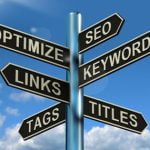When selling products online, the design of your website is just as important as the quality of your website. A significant portion of your potential customers will not buy your products if your website looks ugly and is difficult to use. So if you don’t want your sales figures and conversions to take a hit your website design needs to be carefully considered.
 The problem is that there are a lot of contradictions out there when it comes to how a website should be designed. Some of these contradictions are just plain myths and you need to know what they are if you’re to avoid the problems that they may cause.
The problem is that there are a lot of contradictions out there when it comes to how a website should be designed. Some of these contradictions are just plain myths and you need to know what they are if you’re to avoid the problems that they may cause.
Myth No. 1: The Call To Action Has To Be Above The Fold
You might have heard about the call to action having to be above the fold if you are to retain a good conversion ratio. However, this isn’t necessarily true, because if you’re able to capture the attention of your visitor and then place the call to action at the bottom of the content, then that could increase your conversion ratio.
The idea behind this line of thinking is that if you throw a call to action in the face of your potential customers then they might not respond well simply because they have no reason to respond to it. On the other hand, if you explain to them the benefits of your products by, for example, telling a story that conveys emotion, and then show them the call to action then it will be more effective. Think of it this way: if your audience isn’t intrigued enough to scroll down to see what is on the page then they aren’t going to buy your products anyway. So don’t cram everything above the fold if it looks unnatural simply because you want to get your call to action in there.
Myth No. 2: The Look Is The Most Important Aspect
Sure, the way your website looks is important, but in the scheme of things the most important element of website design is the functionality. The navigation options have to be very intuitive and smooth. The products or services must be displayed so that customers completely understand the offer, and the checkout process has to be secure.
The website doesn’t have to look good for the customer to buy products from you. However, if the functionality of the website is providing a difficult time for the end user then they may not end up buying a product or service that they would have if the functionality was at least average.
Take a look at your website and think about how the customers will experience the different elements. Be very critical with every detail and you will end up with a website that your customers will enjoy using.
Myth No. 3: The Homepage Is The Most Important Page
A lot of companies spend a lot of focus on how their homepage looks, and in the process neglect to give the same care and attention to the inner pages. This is counterproductive because typically people don’t buy products from a homepage. They do so from the product description pages, which mean they need to look just as impressive as the homepage. In fact, a significant portion of your visitors might not even see your homepage. They may land on one of your product pages from the search engines and by viewing that page alone decide if they should buy from you or trust your content.
Having said all that, it should be pointed out that your homepage does matter; you just need to keep in mind that it isn’t the most vital piece of your website like you might have thought.
Myth No. 4: Use A Lot of Widgets
Some websites have way too many widgets than they require to get their message cross. Widgets such as polls, images, user statistics and other data that aren’t important to the buyers just clutter the website without adding any real value. The clutter can make it difficult to navigate a website and that in turn means potential buyers could leave your website out of frustration.
Nowadays a minimalist design is what most companies go with and the reason for that is because it’s easier to design and provides better results. But don’t take this information or anything else mentioned in this article at face value. You need to conduct your own testing to see what works for the products or services that you’re selling and the demographics that you have. It’s only through testing that you can truly arrive at a website design that is set up for high conversions.







